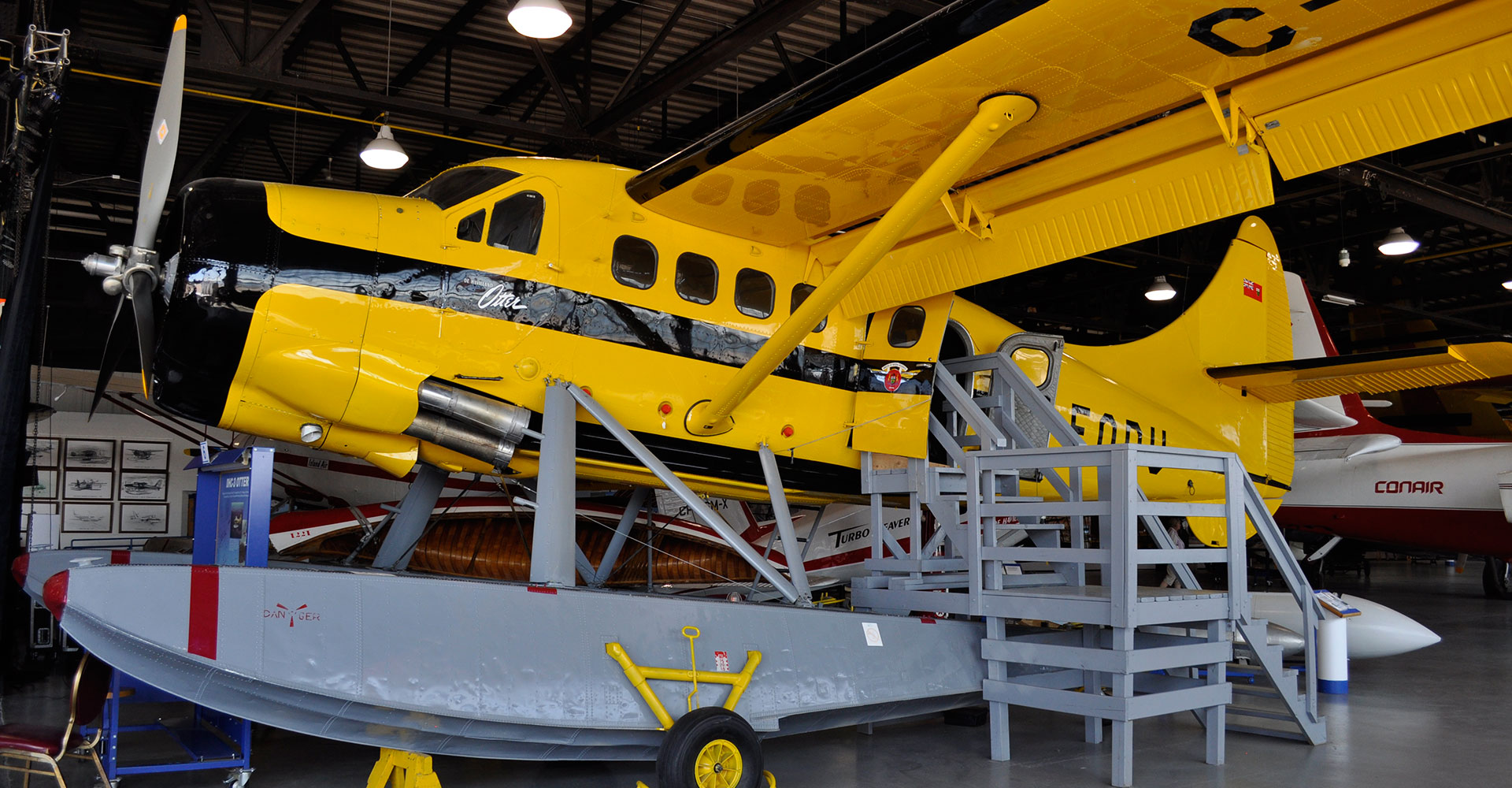The bushplane itself is considered an iconic piece of Canadian History. Today, one of the most prominent uses of the bushplane is to bring passengers and cargo to remote fly-in-only locations. Many of these locations can be found in the Algoma region.
The History of the CBHC
The Canadian Bushplane Heritage Centre is located in the historical hangar located on the St. Marys River in Sault Ste. Marie, Ontario. The hanger was first established by the Ontario Provincial Air Service in 1924 with pilots returning home from the first world war. Originally, it was created as an air service used to map areas in Canada and to survey forested locations. This was very significant because it was here that the idea to fight bushfires using a bushplane was created.
A larger section of the hanger was built in 1947 and is now the current site of the CBHC and many exhibits. Although the original hangar is still onsite, it is not accessible to the general public and is not part of the museum’s exhibit.
In 1987 a group of volunteers looking to preserve this important part of Canadian history made an agreement with the Ontario Ministry of Natural Resources. This agreement allowed the volunteers to use part of the hanger for storage and displays until the Fire and Aviation Division operations relocated operations to the Sault Ste. Marie Airport. The CBHC worked very hard to expand not only its attractions but, its rich history over the many years in operation. Today, the CBHC stands as a piece of history that the community of Sault Ste. Marie is proud.
1. The Canadian Bushplane Heritage Centre Hanger is the only non-military air hanger to have an onsite test cell.
Currently, this exhibit is only available during special events but, a marvel nonetheless. The purpose of the test cell is to run and test planes’ engines to ensure that they are running to the manufactures specifications. The plane engines are run for 7 hrs straight to ensure efficiency and strength. The test cell can be viewed inside the cell itself or from the fully functional control room. When a demonstration is in progress patrons are able to watch the action from a live LCD monitor to ensure safety.
2. One of the plane exhibits is a movie star!
The Fokker F.VIIb-3m Trimotor “Friendship” is in fact the same replica plane that can be seen in the 2009 movie “Amelia” starring Hilary Swank, Richard Gere and Virginia Madison. The original aircraft was built by the Dutch aircraft manufacturer Fokker in 1927/1928. This plane has a great history behind it and is the plane that Amelia Earhart flew over the Atlantic as a passenger on June 17th, 1928. Making her the first woman to fly across the Atlantic ocean.
This replica being built for the film was later donated to the CBHC after filming was completed and can now be viewed as part of the exhibit.
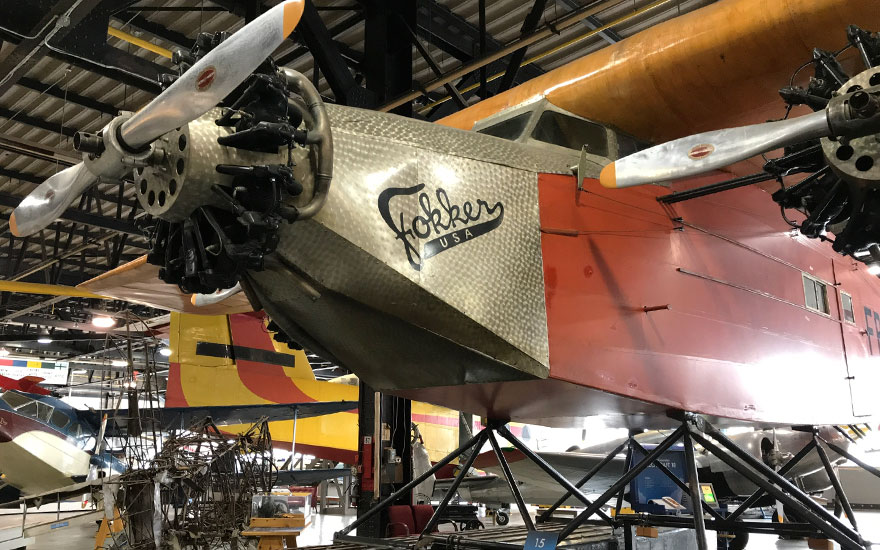
3. You can fight forest fires in 3D!
One of the attractions offered at the Canadian Bushplane Heritage Centre Hanger is a 3D film presentation that puts you both on the ground and in the air to show what it is like to battle a forest fire. Filled with special effects, experience how the Ministry of Natural Resources Aviation crew works to control wildfires.
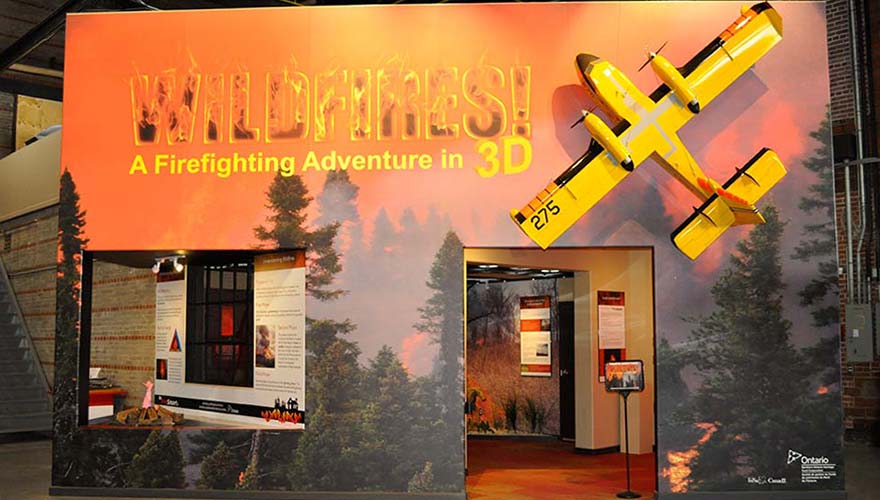
4. There are currently more than 25 aircraft on display.
Over several years CBHC has been able to obtain more than 25 air crafts to display in the museum. Some of these are open to the public to climb aboard and explore inside the plane, cockpit and cargo hold. Many of the aircraft have even been restored to fully-operational status.
A list of aircraft on display can be viewed here.
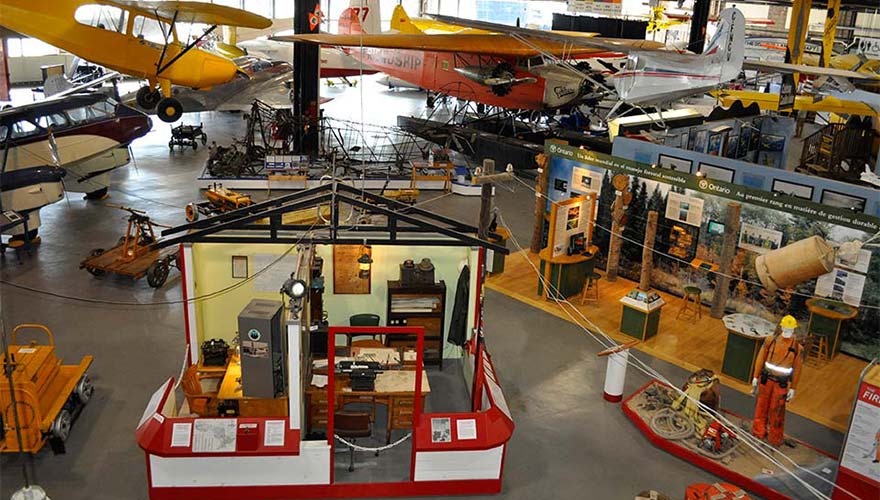
5. The museum is 100% interactive.
The Canadian Bushplane Heritage Centre offers many educational opportunities and offers a very unique experience. The museum itself is 100% interactive offering a strong focus on the science of flight. Some of the available activities include:
- Sending morse code messages from a 1940s Ranger Office
- Climb a real fire tower and radio to the Rangers office below
- Flight Simulators
- Sit in the cockpit of a real vintage bushplane
New to the museum is the Northern Nature Trading interactive visitor experience. In partnership with Science North, Northern Nature Trading is a fun way to learn and find new things about nature.
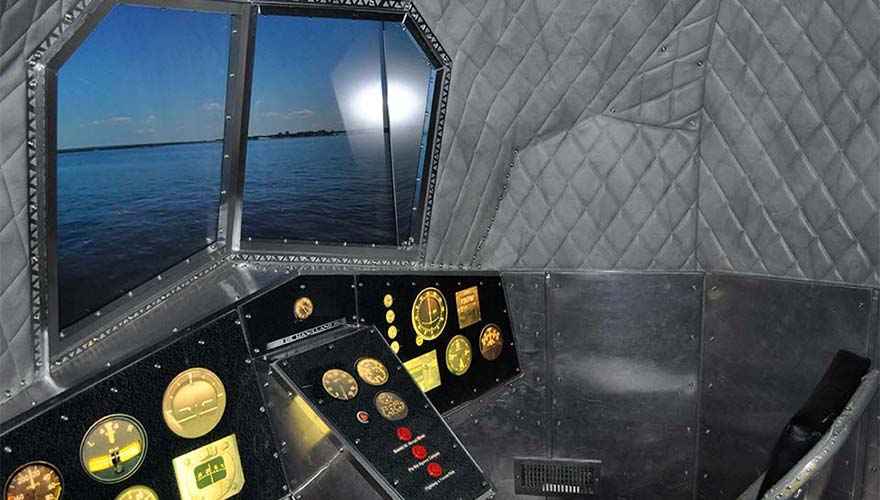
For more information and upcoming events for The Canadian, Bushplane Heritage Centre click here.
Related Posts

River Paddling Adventures
With direct access to Lake Superior, Lake Huron, and some of the most...
Read More
The Group of Seven Discovery Route
I am heading to Northern Ontario. Algoma to be specific, to photograph...
Read More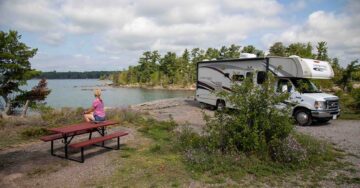
Northern Ontario RV Adventure
Editor's Note: This 8-day Northern Ontario RV Adventure began from Toronto...
Read More